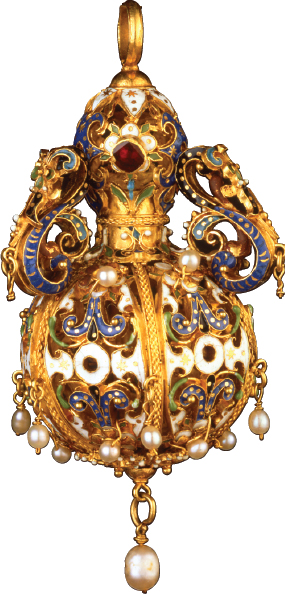What factors led to European exploration in the fifteenth century?
Printed Page 30

Sixteenth-Century Pomander
This jewel-encrusted pomander was designed to be stuffed with aromatic spices brought to Europe through the Mediterranean trade routes dominated by the Italians or through the Indian Ocean trade route around Africa dominated by the Portuguese. Ordinary Europeans could not afford the pomander or the spices. The pomander illustrates the connection among fashion, luxury, and the spice trade. The Burghley House Collection, Stamford, England EWA008553.
HISTORICALLY, THE EAST — not the West — attracted Europeans. Wealthy Europeans developed a taste for luxury goods from Asia and Africa, and merchants competed to satisfy that desire. As Europeans traded with the East and with one another, they acquired new information about the world they inhabited. A few people — sailors, merchants, and aristocrats — took the risks of exploring beyond the limits of the world known to Europeans. Those risks could be deadly, but sometimes they paid off in new information, new opportunities, and eventually the discovery of a world entirely new to Europeans.
CHRONOLOGY
Mid-fourteenth century
- – Black Death kills approximately one-third of Europe’s population.
1415–1460
- – Portuguese led by Prince Henry the Navigator use new navigational tools and techniques to aid maritime exploration.
1480
- – Portuguese ships reach the Congo.
1488
- – Bartolomeu Dias rounds Cape of Good Hope.
1498
- – Vasco da Gama sails to India.